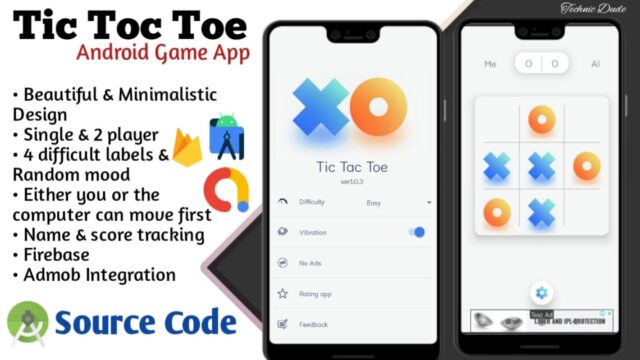Software Project Management Multiple Choice Questions with answers pdf for IT students who are preparing for academic and competitive exams.
Software Project Management
Software Project Management MCQ with answers
- The effective software project management focuses on four P’s – People, Process, Product, and Project. (True / False)
Ans. True - People Management Capability Maturity Model (PM-CMM) has been developed by _.
Ans. Software Engineering Institute (SEI) - _ must plan, motivate, organize and control the practitioners who do software work.
a) Project Managers
b) Senior Managers
c) Customers
d) End Users
Ans. a - Organization structure depends on the people working in it. (True / False)
Ans. False - Wheelwright and Clark define a continuum of organizational structures between two extremes, _ organizations and _ organizations.
Ans. Functional, Project - The realistic percentage for striving to work in Software Project Development is _.
a) 40%
b) 80%
c) 50%
d) 100%
Ans. b - In flat structured organizations, work is more flexible and the employee does whatever is needed. (True / False)
Ans. True - In _ organizations, work is organized into small workgroups and integrated regionally and nationally/globally.
Ans. Matrix - _ organizations take the networked structure one step further by combining IT with traditional components to form new types of components.
a) Hierarchical
b) Flat
c) T-form (Technology-based)
d) Matrix
Ans. C - Team Leader is responsible for all aspects of the project. (True / False)
Ans. True - _ manage hardware/software requirements for development, testing, validation, and production environments.
Ans. Logistics - _ define testing procedures and certification process.
a) Software Support
b) Software Development
c) Software Management
d) Software Testing
Ans. d - Project Management is the application of knowledge, skills, tools and techniques to project activities to meet the project requirements. (True /False)
Ans. True - Interoperability has become a key characteristic of many systems. (True/ False)
Ans. True - Conducting structured meetings is a form of _ communication.
Ans. Formal - _ encompasses e-mail, or electronic dashboards, or video conferencing system.
a) Formal communication
b) Electronic communication
c) Informal communication
d) Interpersonal networking
Ans. B - Project implementation is the first stage in project development. (True / False)
Ans. False - The _ stage determines the nature and scope of the development.
Ans. Initiation - Testing and Module Integration strategies are addressed in _ phase.
a) Initiation
b) Implementation
c) Planning and Design
d) Maintenance
Ans. C - The project charter is a one-time announcement. (True / False)
Ans. True - The purpose of a _ is to detail the work requirements for projects and programs that have deliverables and/or services performed.
Ans. Statement of Work (SoW) - IAPPM stands for _.
Ans. International Association of Project and Program Management - The three most important factors that influence project management are , ___and .
Ans. Time, Cost, Scope - PERT stands for _.
Ans. Program Evaluation and Review Technique - _ do not highlight inter-task dependencies.
a) Gantt charts
b) PERT charts
c) Both a) and b)
d) None of the above
Ans. a) Gantt charts - The “spiral model”, documented in 1970 by Royce was the first publicly documented life cycle model. (True / False)
Ans. False - Most life cycle models can be derived as special cases of the _.
Ans. Spiral model - _ is the least flexible and most obsolete of the life cycle models.
a) Spiral model
b) Waterfall model
c) Throwaway prototyping model
d) Iterative / incremental development model
Ans. b) Waterfall model - CMM stands for _.
a) Capability Maturity Model
b) Capacity Maturity Model
c) Customer Maturity Model
d) Common Maturity Model
Ans. A - Project scope, pros and cons are discussed in the initiation phase. (True/ False)
Ans. True - A semiformal way of breaking down the goal is called the _.
Ans. Work Breakdown Structure (WBS) - Two general notations used for scheduling are _ charts and _ charts.
Ans. PERT, Gantt - The purpose of planning a project is to identify the sequence of activities as per their complexities and dependencies. (True / False)
Ans. True - COCOMO stands for _.
Ans. COnstructive COst MOdel - In _ mode the project is characterized by tight, stringent constraints and interface requirements.
a) Organic
b) Embedded
c) Semidetached
d) None of the above
Ans. b) Embedded - Budgeting in a business sense is the planned allocation of available funds to each department within a company. (True / False)
Ans. True - ROI stands for _.
Ans. Return On Investment - _ is a standard method for the financial appraisal of long-term projects.
Ans. Net Present Value (NPV) - Cost in a project includes software, hardware and human resources. (True / False)
Ans. True - A schedule provides the idea about the start and finishes dates of key activities or terminal elements of the project. (True / False)
Ans. True - PERT stands for _.
Ans. Program Evaluation and Review Technique - _ in an event indicates ahead of schedule. (Pick right option)
a) Positive slack (+)
b) Negative slack (–)
c) Zero slack
d) None of the above
Ans. a) Positive slack (+) - Booz Allen Hamilton, Inc. has developed a Gantt chart. (True / False)
Ans. False - , , _, are examples of automated scheduling tools.
Ans. Microsoft Project, ABT’s Project Workbench for Windows, Symantec’s Timeline - Accelerating the project schedule is often termed as _ of the schedule. (Pick right option)
a) Breaking
b) Crashing
c) Speeding
d) None of the above
Ans. b) Crashing - Most cost estimates are determined in terms of _.
Ans. Person-Months (PM) - ‘Work expands to fill the available volume’ is _ principle.
a) Parkinson’s
b) James’s
c) John’s
d) None of the above
Ans. a) Parkinson’s - COCOMO model was developed by Parkinson. (True / False)
Ans. False - If there is a certain probability that the objectives of the project will not be achieved, this risk should not be reported to higher management. (True / False)
Ans. False - Risk the combination of both the possibility of occurrence of adverse event and the impact of such bad event. (True / False)
Ans. True - When there are disagreements between the project lead and overall project manager, the same can be resolved through _.
Ans. Change control board - A _ is a discrepancy between how a requirement was mentioned and how the same requirement is implemented. (Pick right option)
a) Defect
b) Change
c) Risk
d) None of the above
Ans. a) Defect - Tom DeMarco stated, “You can’t control what you can’t measure”. (True / False)
Ans. True - _ is the statistics gathered over the course of the execution of the project.
Ans. Software Metric - _ is a software package used for preparing earned value analysis. (Pick right option)
a) MS Project
b) Primavera
c) Lotus Notes
d) None of the above
Ans. b) Primavera - Status meetings and status reporting are required for a medium-size project. (True / False)
Ans. True - _ is a set of practices originally developed by Motorola to systematically improve processes by eliminating defects.
Ans. Six Sigma - Six Sigma is a registered service mark and trademark of _. (Pick right option)
a) Microsoft
b) Sun Microsystems
c) Motorola
d) None of the above
Ans. c) Motorola - _ involves activities like typical strategies, processes, techniques, and tools involved in containing the adverse impacts of risks on the software project.
Ans. Software risk management
Enrol Now for Project and Infrastructure Financing By Edureka and increase your chances to get hired by Top Tech Companies
- Software Configuration Management (SCM) is an umbrella activity that is applied throughout the software process. (True / False)
Ans. True - A _ becomes the basis to further elaboration of Project plan and the Software Requirement specification as the project progresses.
Ans. Scope and Vision document - A _ has a name, attributes, and is “connected” to other objects by relationships.
Ans. Configuration Object - Software configuration management is not an element of software quality assurance. (True / False)
Ans. False - Two types of objects that can be identified in configuration management are _ and _.
Ans. Base Objects, Aggregate Objects - _ combines procedures and tools to manage different versions of configuration objects that are created during the software process.
Ans. Version Control - For a large software engineering project, uncontrolled change rapidly leads to chaos. (True / False)
Ans. True - The results of the evaluation are presented as a change report, which is used by a _.
Ans. Change Control Authority - _ helps to eliminate the problems by improving communication among all people involved.
Ans. Status Reporting - _ can take place at any time during the project, though the sooner the better. (Pick right option)
a) Risk assessment
b) Risk management planning
c) Risk resolution
d) Risk prioritization
Ans. a) Risk assessment - Project risks are those risks that could result in project slippage, budget constraints related issues, and resource and customer requirement related issues. (True / False)
Ans. True - _ threaten the applicability of the software product being built.
Ans. Business risk - ACAT stands for _.
Ans. Avoid, Control, Accept or Transfer - The risk associated with the degree of uncertainty that the project schedule will be maintained and that the product will be delivered on time is a schedule risk. (True / False)
Ans. True - The risk associated with the degree of uncertainty that the resulting software will be easy to correct, adapt and enhance is a _.
Ans. Support risk








